I love playing doubles. I feel like a different player when I play doubles. I feel like I have more control over the game and everything seems much more straightforward. Maybe I don’t feel so alone. I can’t tell.
If you want to play well in table tennis doubles, you need to practice the techniques, footwork, hand signals, and the most important thing is the tacit understanding between two players.
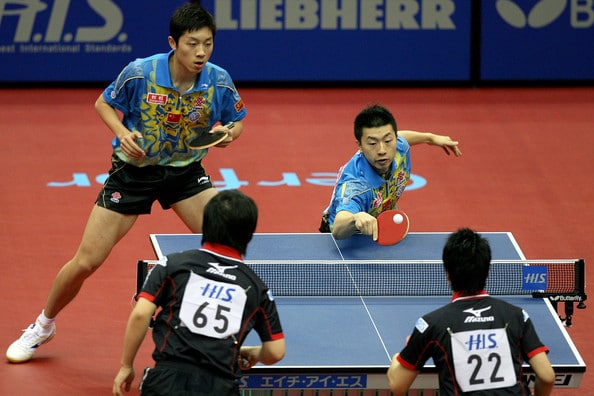
Not every player can be on a doubles team with any player. There isn’t a standard to follow to say this style goes with that style etc.
Table of Contents
Cooperation Between Two Players
Playing doubles is like finding the ideal partner to marry. It is not for you to find the top player to partner with; instead, you can find the partner that can match with you entirely. Two players with totally different playing style can become great partners.
Many double teams, coupled with two top players, tend not to perform well during competitions. Most of the time, they play worse than the teams with an advanced and lower-level player.
One righty and one lefty is the perfect match.
The best team that one can produce has a lefty and a righty to play doubles game. They have better advantages compared to two right-handed or two left-handed player team.
A lefty and righty team have an entire table open to the player who turns to receive the shot. The player does not have to cover a great distance for his partner to play.
For both lefty or righty doubles team, every time after hitting the ball, Player A will have to run to the back and around Player B. A player cannot move to another player’s side as can get stuck on one side. It will leave the table open, and the opponent will have a chance to score.
While for a righty and lefty doubles team, Player A needs to move a little to the back and side and Player B will be able to cover the entire table with his forehand facing Player A. After hitting the ball, Player B can step back, and Player A can come in to make the shot. They won’t get stuck or collide with each other.
Rules of Playing Double in Ping Pong Game
Is table tennis doubles played the same way as in a singles game or are the rules different?
Let’s find out here…
Doubles game in table tennis involves two players on each side of the table, making four players altogether.
The doubles game is played the same way as a singles game, but there are slight differences in the game rules.
In a doubles game, a line is drawn along the table’s axis dividing it into two equal half courts, 3 mm wide which runs parallel with the sidelines.
Table Tennis Doubles Rules
So what is the difference between a doubles games and singles game in table tennis?
(1) The Order of Play
Players must alternate shots. If one player of a doubles team plays the ball two times in a row, the team will lose a point.
If there are players A and C versus player B and D, A is the server and B is the receiver.
The order of play will be Player A serves to Player B, Player B returns to Player C, and Player C returns to player D. The rally will continue until either side scores a point.
(2) The Order of Serving
The serving sequence in doubles game is different from the singles game.
After each 2 serve the previous receiver will become the server, and the previous server will become the receiver.
If the order of play is A to serve B and B to return C and C to return to D, the order of play after the change of service will now be B serve Player C, and C returns to player D, and D returns to Player A.
In the doubles game, the team that has the right to serve first decides which of them will serve, but this can only happen in the first game of the match.
The first receiver becomes the first server in the second match, that is if player A serves to player B in the first game, player B will now be the first to serve in the second game of the match.
(3) Changing Sides
The pairs change sides when they reach 5 points in the match’s final game.
However, table tennis doubles rules are a little bit different for wheelchair players. After returning a serve, any of the players can return the ball unlike in regular doubles game. However, the players remain in their positions on the side of the table because if they don’t they will lose the point.
The Bottom Line…
I hope that I have explained the table tennis rules for doubles to you in a way you understand. If you are still not satisfied, you can contact me, ask any questions, and I will get back to you ASAP.
You can also read the ITTF official table tennis rules specified in the table tennis handbook laws.
Hand Signals
In the table tennis doubles, you may see the players gesturing with a single hand under the table before making a serve. You may wonder what the heck they are doing there?
When playing doubles, the hand signal is quite essential. It is a signal that you want to inform your partner what type of serve you will make to predict how the ball will return from the opponent once you trigger the serve.
For example, my serve will be fast and non-spin. This type of serve will make the opponent return a manageable ball that goes out of bounds. The corresponding occurrence may be:
- The opponent didn’t receive the ball—an optimal scenario.
- The opponent rushes to receive the serve, and the returning quality is not good—the second ideal scenario. My partner can fully prepare for a strong offense.
- The opponent identifies my serve and makes a fast attack. My partner will need to have full awareness of the defense across the board.
If I am doing a backspin close to the table, the estimated speed is slow, and the drop point is close to the table. It is difficult for the opponent to attack directly. Usually, the ball will be chopped back by the opponent. The corresponding occurrence may be:
- The opponent returns the ball to the net—an optimal scenario.
- The opponent returns a chop to the back of the table—the second ideal scenario. My partner should be prepared to take the arc-spinning attack as the best strategy.
- The opponent’s chops back the ball close to the table. My partner needs to be prepared to chop or flick the ball.
- The opponent forcibly took an arcing attack from my serve. My partner will prepare his defense across the board.
Different players will have separate hand signals when they are playing in doubles. The main important things are they need to be simple and easy to understand.
For example:
- Point the thumb up: indicate doing a topspin serve.
- Point the thumb to the left: means the drop point will be on the left.
- Point the thumb to the right: indicate the drop point will be on the right.
- Point the thumb down: shows you are doing a backspin serve.
- Open five fingers, swing 1-2 times left and right: indicate non-spin serve.
- The hand stretches forward to the left: indicate the drop point is more to the left far to the table.
- The hand extends to the right: shows the drop point is more to the right far to the table.
- Five fingers hold as a fist and turn to the left: indicate the drop point on the left and near the table.
- Hold five fingers like a fist and turn to the right: shows the drop point on the right and near the table.
No Standardization
There is no standard hand signal for table tennis doubles as long as the two playing partners have communicated in advance and agreed on the signs.
In professional competition, it is not the player who serves gives the hand signal. Instead, it is the partner receiving the return shot from the opponent who gives the indication. It makes it easy for the partner to prepare since he can anticipate how the opponent will return the shot.
Footwork
In the table tennis doubles, the requirements of the footwork are higher than the singles.
“8” Footwork
If the pairings are with one left-handed player and one right-handed player, then the footwork is relatively simple. They can move based on the “8” footwork.
The left-handed player returns to the back of the left of the table after hitting the ball. The right-handed player hits the ball in front of the ball and repeats accordingly.
If the two right-handed or left-handed players play in the doubles, the footwork requirement is higher than the pairing of one left-handed and one right-handed player.
Triangle Footwork
We take the right-handed pairing as an example. The triangle footwork is used when the ball is in the forehand area.
After A hitting the ball, he will move clockwise to the rear side of the B. After B hits the ball, he moves in the same way as A, moving in a clockwise manner.
When the ball comes to the backhand area, B will use counterclockwise footwork.
However, the ball’s actual route is not fixed, and the double player’s usual practice is required to develop a high sense of tacit understanding.
Training
Train with a Trainer
For multi-ball training, two players in doubles can practice with a trainer. The trainer can hit the ball to a certain point on the doubles’ side. Since the trainer does not need to move, the ball’s speed is relatively fast. It makes the training and footwork position of the doubles to become more difficult. The effect is better than two players train with two players.
This training method is equally applicable to two pairs of double players. Both teams need to hit back the ball continuously to increase the difficulty of training.
Random Drop Point
Team A can hit the ball freely to any drop point, and Team B must return the ball to the specified drop point (left corner or right corner) while moving.
It often happens in doubles competitions where Player A is weaker in the left corner, and Player B has a particular loophole in the right corner. In response to the opponent’s apparent weakness, make full use of various lines to hit the ball to the other party’s shortcomings.
Counter Attack While Moving
In addition to the above training, double players need to be trained on the front and back step movement and the counterattack training while moving.
Therefore, in the above training, different players can train according to their playing style and technical expertise.
The principle of doubles pairing
Affinity
Affinity is the most crucial consideration during pairing combinations. Close affinity can form an excellent combination because of their mutual dependence.
Complement each other
Both players should have their characteristics in terms of technology and techniques. They need to be able to complement each other and integrate into one.
Wang Tao and Lu Lin, the men’s doubles champions of the 25th Olympic Games and the 42nd World Table Tennis Championships, rarely spoke in the game but cooperated very well with each other.
One lefty and one righty
It is best to have one lefty and one righty to form the doubles team. It avoids collision, and they can play very fast with their movement.
Good Controlling
Players who have an excellent ability to control the ball are ideal for playing in doubles. They can make the shot with an accurate drop point and fast movement.
The double-matching partners need to be matched and fixed.
Because after some time, both players have built up mutual understanding and familiarity. The coach cannot change partners when the competition is approaching.
Doubles Pairing Recommendations
An arcs player matched with a fast attack player
One can play fastball, and the other can play slow ball. Therefore, they can complement each other.
Two offensive attackers or two arcs players
Get two offensive or two arcs players to form the doubles team, with a lefty and a righty. One is good at close table attack, and the other is good in far table offensive play. One is good at forehand attack, and the other is good at backhand.
One pip in and one pips-out
To have one pip in a player to pair with one pips-out player. The doubles can play offensive and defensive in the game.
The pairing of two choppers
One player stands close to the table to do the push. Another player stands slightly behind. They should focus on generating more spin when chopping the ball and find the opportunity to make a strong counterattack.
The pairing of players with different playing styles
If both are skilled players and have refined techniques, they can try to match each other to form the doubles team. The threat of such a team combination can be huge.
Related post:

Warren Davies

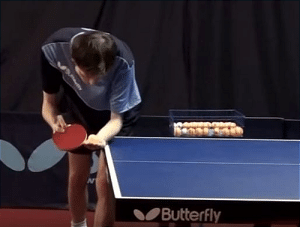
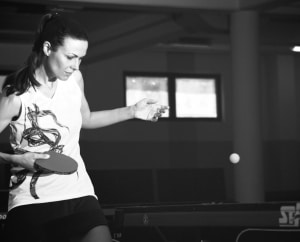
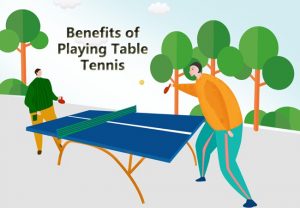
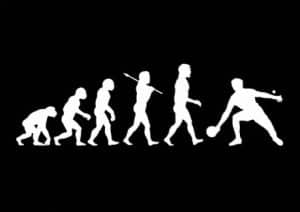
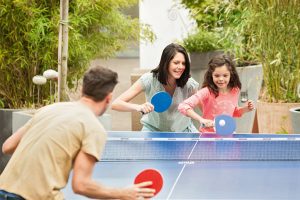
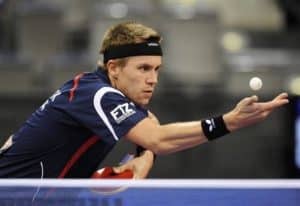
4 thoughts on “How to Play Table Tennis Doubles – Rules and Strategies”
I also feel like a different player (better, that is) when I play doubles. I have more control over the game, in decision making as well as ball placement… everything seems easier indeed! Thanks for this post!
When you play to 11, and first server serves and then loses the point does his partner serve next or does it go to the receiving team.
I meant after the first server serves 2 points does the serve go to your opponent or does your partner serve for 2 points
At 10-10, it is a deuce. Each one will get one serve. Which mean you or your partner serve one, and the serve will then go to your opponent. Who win the two clear points will win the set.